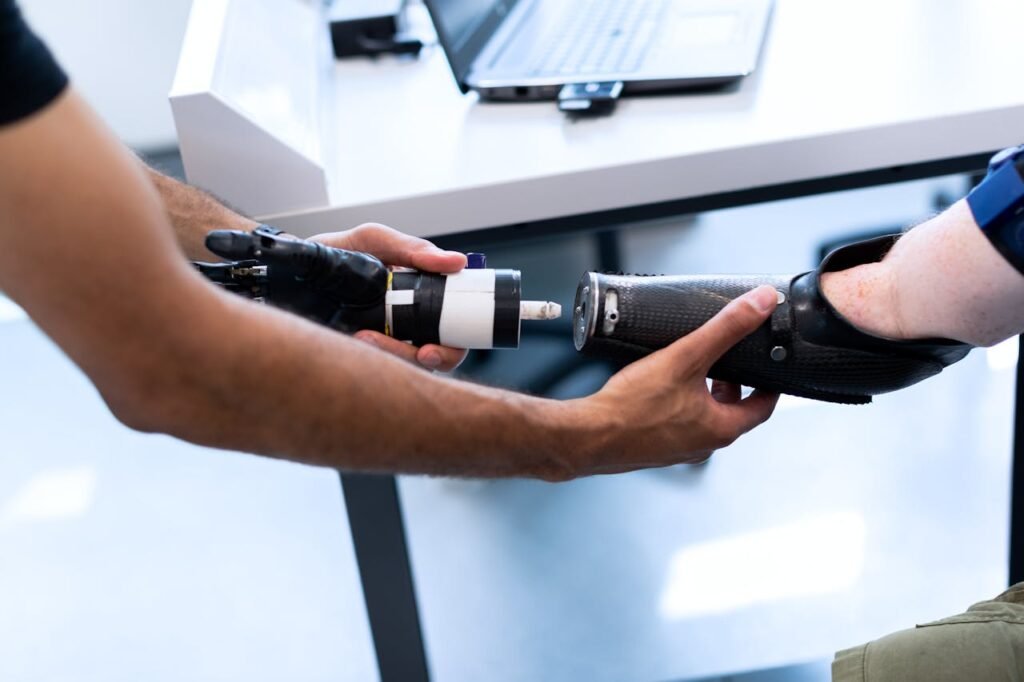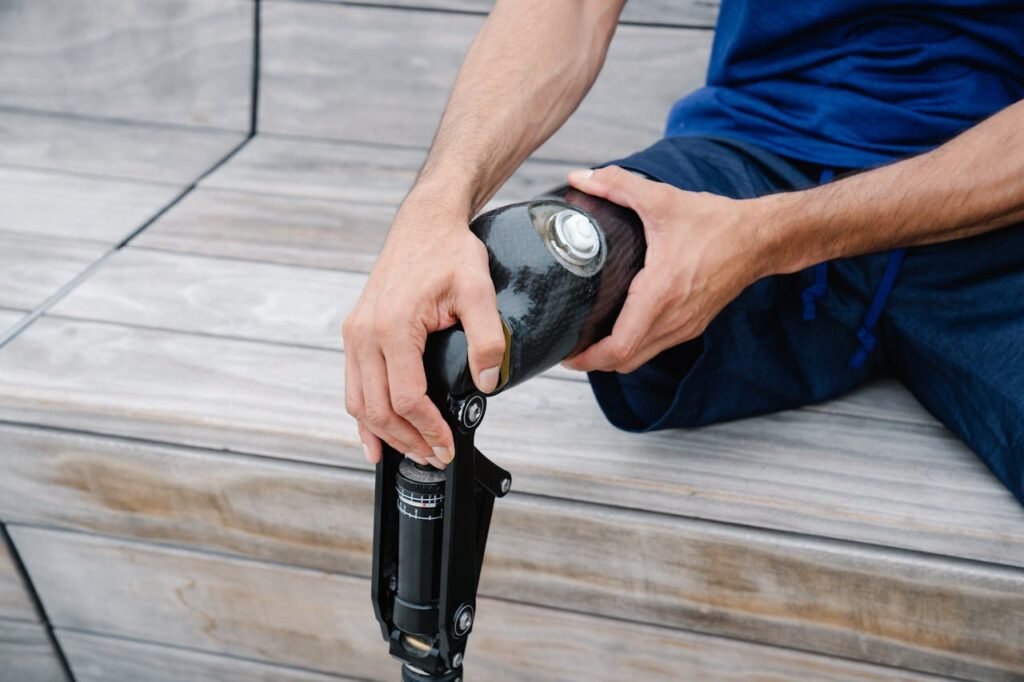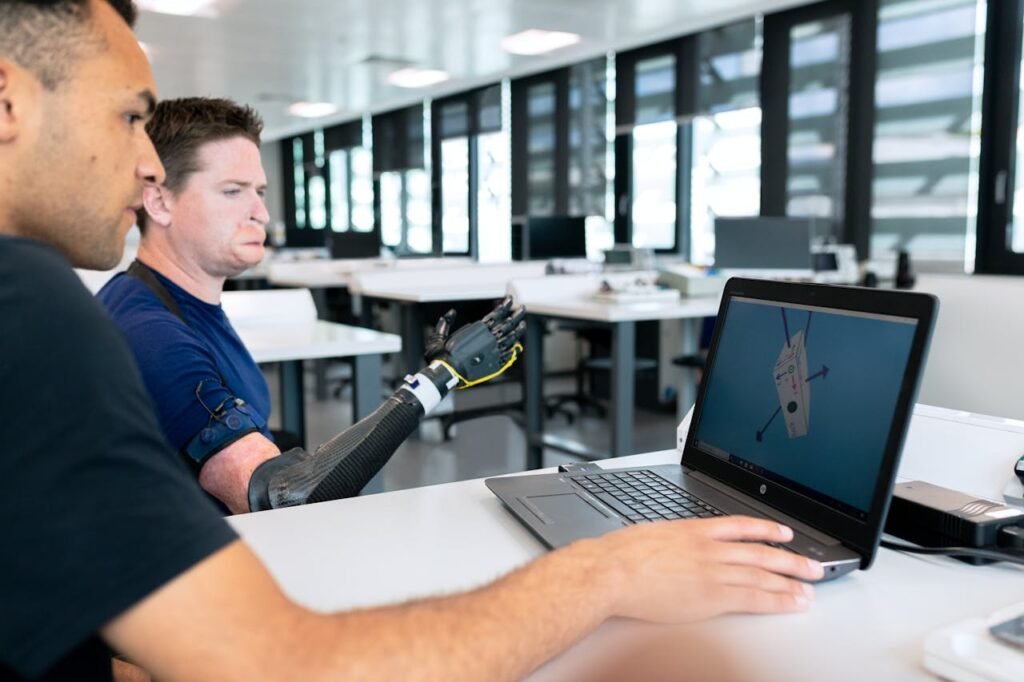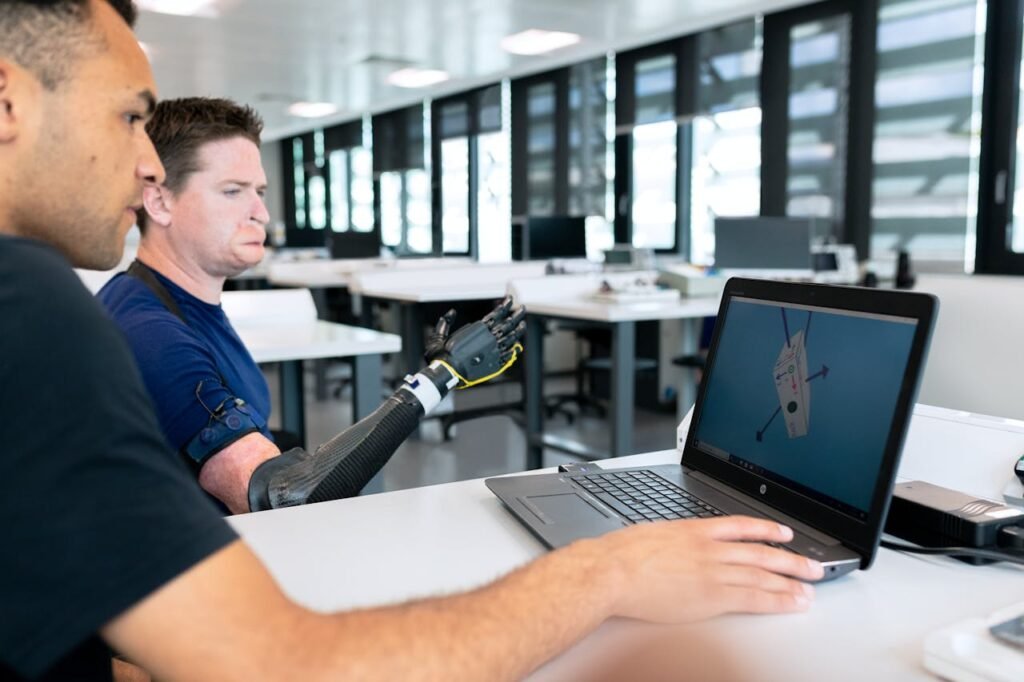Emergencies can be overwhelming, but for individuals living with a disability, the challenges are often heightened. Whether it’s a natural disaster, a medical crisis, or an unexpected power outage, having a solid emergency plan tailored to your specific needs can make all the difference. Planning ahead ensures safety, reduces stress, and gives you the confidence to handle unforeseen situations.
This guide offers detailed advice on preparing for emergencies when living with a disability. From understanding your needs to building a support network, every step is designed to help you stay prepared and empowered.
Assessing Your Needs and Risks
The first step in emergency planning is understanding your unique requirements and the risks you might face. Emergencies can affect people differently, depending on their circumstances, location, and the nature of their disability.
Understanding Personal Requirements
Take some time to evaluate your specific needs. For example, if you use a wheelchair, you may need to consider how to evacuate safely if elevators are not operational.
If you rely on assistive devices or medical equipment, think about how a power outage or supply chain disruption might impact their availability.
Make a list of the items and support systems you use daily, such as medications, prosthetics, communication tools, or mobility aids. This will serve as the foundation for your emergency plan, helping you prioritize what to protect and how to adapt if disruptions occur.

Identifying Potential Hazards
Emergencies can range from natural disasters like floods and earthquakes to localized events like fires or power failures. Knowing which risks are most likely in your area allows you to tailor your plan effectively.
For example, individuals living in flood-prone regions might prioritize waterproof storage for essential items and identify elevated evacuation routes.
Conversely, someone in an earthquake-prone area might focus on securing heavy furniture and preparing for potential building damage.
By combining an understanding of personal needs with knowledge of local risks, you can create a comprehensive plan that addresses both immediate and long-term challenges.
Building an Emergency Kit
An emergency kit is a cornerstone of preparedness, ensuring you have everything you need to stay safe and comfortable during a crisis.
Personalizing Your Emergency Supplies
While standard emergency kits include basics like food, water, and a flashlight, individuals with disabilities may need additional supplies tailored to their specific needs. For example, if you use a prosthetic limb, your kit should include cleaning supplies, extra liners, and repair tools.
For those who rely on medication, include at least a week’s supply along with a copy of your prescription. If refrigeration is necessary, consider portable coolers or ice packs.
Similarly, individuals with hearing or vision impairments may need extra batteries for hearing aids or backup communication devices.
Maintaining and Updating Your Kit
Building a kit is not a one-time task. Regularly check the contents to ensure medications are not expired, batteries are functional, and supplies are still relevant to your current needs. Revisiting your kit every few months ensures you’re always prepared, even as circumstances change.
Creating a Personalized Emergency Plan
Having an emergency kit is essential, but it’s just one part of a broader preparedness strategy. An emergency plan tailored to your specific needs provides a clear roadmap for how to respond during a crisis.
Establishing Communication Strategies
Effective communication is vital during emergencies. For individuals with disabilities, this often requires extra considerations to ensure messages are clear, accessible, and reliable.
Start by identifying how you’ll stay informed during a crisis. Sign up for local emergency alerts and ensure they are available in formats suited to your needs, such as text-based notifications for those with hearing impairments or audio alerts for individuals with vision impairments.
Next, develop a system for staying in touch with family, caregivers, or emergency contacts. Discuss your plan with them in advance and agree on a communication method, such as text messages, video calls, or prearranged signal phrases. For example, you might use simple text updates like “Safe” or “Need Help” to convey your status quickly and efficiently.
For individuals who use assistive devices to communicate, ensure these tools are fully charged and include backup batteries in your emergency kit.
Mapping Out Evacuation Procedures
Evacuation planning is a critical component of emergency preparedness, especially for individuals with mobility challenges. Start by assessing your home or workplace to identify accessible exits and potential obstacles.
For multi-story buildings, determine how you would evacuate if elevators are unavailable, such as using evacuation chairs or ramps.
Work with your support network, including family, neighbors, or coworkers, to practice evacuation drills. Familiarity with the process builds confidence and reduces stress during real emergencies.

It’s also essential to know the location of nearby accessible shelters. Many communities offer specialized shelters equipped with wheelchair ramps, accessible restrooms, and staff trained to assist individuals with disabilities. Familiarize yourself with these facilities and include their contact information in your emergency plan.
Developing a Strong Support Network
No one should face an emergency alone, and a reliable support network is invaluable for individuals with disabilities. This network can include family members, friends, neighbors, caregivers, or community organizations.
Engaging Your Local Community
Start by connecting with people in your immediate vicinity. Neighbors can be a crucial source of assistance during emergencies, especially if family members or caregivers are unable to reach you.
Share your emergency plan with trusted neighbors and discuss how they might assist, such as helping with evacuation or checking in during a crisis.
Joining local disability advocacy groups or community organizations can also provide access to valuable resources and support networks.
These groups often host workshops on emergency preparedness and may offer specialized services, such as transportation assistance or temporary accommodations.
Leveraging Professional and Government Resources
Government agencies and non-profit organizations often provide emergency services tailored to individuals with disabilities.
For example, many municipalities maintain voluntary registries for residents with disabilities, ensuring that emergency responders are aware of their needs. Registering with these programs can prioritize assistance during evacuations or power outages.
In addition, some organizations offer emergency response plans specifically for medical devices or prosthetics. Contact your prosthetist or device manufacturer to learn about any resources they may provide, such as repair kits or replacement services during emergencies.

Practicing Your Emergency Plan
Having an emergency plan is only effective if it’s well-rehearsed. Regular practice ensures you and your support network are prepared to act confidently and efficiently during a crisis.
Conducting Emergency Drills
Simulating emergencies allows you to test every aspect of your plan, from communication to evacuation. Practice different scenarios, such as power outages, fires, or natural disasters, to identify potential weaknesses and refine your approach.
For example, if your plan involves using an evacuation chair, practice navigating stairs with the help of your support team. If you rely on medical equipment, test how you would transport or secure it during an evacuation. Repetition builds familiarity, ensuring everyone involved knows their roles and responsibilities.
Businesses and community organizations can support this effort by hosting inclusive emergency preparedness drills. Such events not only help individuals with disabilities but also educate the wider community on accessibility needs during crises.
Testing Communication Tools
Practice using your communication tools to ensure they work as expected. For example, test your emergency alert system to confirm you receive messages in an accessible format.
If you use apps or devices for communication, familiarize yourself with their features, including backup options in case of power loss.
Review your emergency contact list regularly with your support network. Confirm that phone numbers and other contact information are accurate and up to date. This ensures you can quickly reach the right people during a crisis.
Preparing for Shelter-in-Place Scenarios
Not all emergencies require evacuation. In some cases, staying at home is the safest option. Being prepared for shelter-in-place situations is essential for maintaining comfort and safety during extended disruptions.
Stockpiling Essentials
For shelter-in-place emergencies, ensure you have a supply of food, water, medications, and personal care items to last at least a week. Include items tailored to your specific needs, such as spare prosthetic liners, cleaning supplies, or assistive device chargers.
If you require medical equipment that relies on electricity, such as ventilators or CPAP machines, invest in a backup power source. Options include portable battery packs, generators, or solar-powered chargers.
Creating a Safe Environment
Prepare your living space for shelter-in-place scenarios by identifying hazards and making modifications as needed. For example, secure heavy furniture to prevent it from tipping over during an earthquake, or install weatherproofing measures to protect against flooding.
Designate a safe area in your home where you can comfortably stay for an extended period. This area should be accessible and equipped with essential supplies, communication tools, and any adaptive equipment you need.
Navigating Recovery After an Emergency
The recovery phase is just as important as preparation and response. For individuals with disabilities, rebuilding routines and accessing support can take time and effort.
Accessing Post-Emergency Services
Government agencies, non-profits, and community organizations often provide recovery assistance after disasters. These services may include temporary housing, medical care, financial aid, or counseling.
Contact your local disability advocacy group or municipal office to learn about available resources. If your prosthetic or assistive device is damaged, reach out to your prosthetist or manufacturer for repair or replacement options. Some organizations may expedite services for those affected by emergencies.

Rebuilding Confidence and Routines
Emergencies can be emotionally and physically exhausting. Take time to rebuild your routine, starting with small, manageable goals. For example, focus on restoring your daily schedule, such as using your prosthetic or engaging in light physical activity.
Businesses can support individuals during this phase by offering post-emergency discounts, expedited services, or community workshops. For example, a prosthetic manufacturer might provide free inspections or repair services for customers affected by a disaster, demonstrating care and commitment to their well-being.
The Role of Businesses in Emergency Preparedness
Businesses have a unique opportunity to make a meaningful difference in emergency preparedness for individuals with disabilities. By offering inclusive products, services, and support, companies can not only empower their customers but also establish themselves as trusted allies in the disability community.
Designing Accessible Emergency Solutions
One of the most impactful ways businesses can contribute is by developing products that prioritize accessibility during emergencies.
For example, prosthetic manufacturers can create devices with features like water resistance, quick-release mechanisms for easier removal, or modular components that simplify repair and replacement.
Companies can also design portable, easy-to-use emergency kits tailored to specific disabilities. A ready-made kit might include items like adaptive cleaning supplies for prosthetics, spare batteries for assistive devices, or emergency backup liners. Providing such tools saves users time and effort while demonstrating a commitment to their needs.

Offering Proactive Support
Proactive outreach is another area where businesses can excel. By offering resources like maintenance checklists, how-to guides, or online workshops on emergency preparedness, companies position themselves as thought leaders and reliable partners.
For example, a series of webinars on “Preparing Your Prosthetic for Emergencies” could educate users while strengthening brand loyalty.
Furthermore, businesses can collaborate with disability advocacy groups to distribute these resources to underserved communities. Partnerships like these ensure the information reaches those who need it most, while also building goodwill and enhancing the company’s reputation.
Providing Post-Emergency Assistance
Supporting customers in the aftermath of an emergency is just as important as preparation. Businesses can offer post-crisis services such as free inspections, discounted repairs, or expedited delivery of replacement parts for damaged equipment.
For example, a prosthetic manufacturer could launch a disaster relief program that prioritizes repairs and provides temporary loaner devices. Clear communication about these services through email, social media, or customer portals ensures that users know help is readily available when they need it.
Empowering Through Awareness and Advocacy
Emergency preparedness is a collective effort that benefits from widespread awareness and advocacy. Businesses can use their platforms to amplify the importance of planning and encourage individuals, families, and communities to take action.
Raising Awareness
Educational campaigns can highlight the unique challenges faced by individuals with disabilities during emergencies, while also offering actionable advice. Social media, blogs, and video content are powerful tools for spreading this message.
For example, sharing real-life stories of how customers navigated emergencies with the help of their prosthetics or adaptive equipment can inspire others to prepare.
Inclusive campaigns that feature diverse voices and experiences resonate deeply with audiences, building trust and fostering a sense of community.
By positioning themselves as advocates, businesses strengthen their connection to the disability community and reinforce their mission of empowerment.
Using Storytelling to Drive Change
Stories are among the most powerful tools for advocacy. By sharing authentic narratives of individuals who have successfully navigated emergencies, businesses can inspire others and demonstrate the importance of preparedness.
These stories should highlight not only challenges but also solutions and the role of community, technology, and planning in overcoming them.
For example, featuring a customer who used a Robobionics prosthetic during an evacuation could showcase the product’s durability and practicality while emphasizing the importance of readiness.
Stories like these resonate with audiences on an emotional level, creating awareness that motivates action. Businesses can amplify these stories through blogs, videos, and social media campaigns, ensuring they reach as many people as possible.
Educating Communities
Education is a cornerstone of advocacy. Businesses can empower individuals and communities by offering workshops, webinars, and resources tailored to emergency preparedness. These educational initiatives should focus on practical, actionable advice, such as assembling an emergency kit, understanding local resources, and practicing evacuation plans.
For instance, a business could host a live webinar with experts discussing how to maintain prosthetics during extended power outages or how to navigate inaccessible evacuation routes. Providing resources in multiple formats—such as downloadable guides, video tutorials, and infographics—ensures accessibility for a diverse audience.
Education isn’t limited to customers. Businesses can extend their advocacy by training employees, vendors, and partners on the specific needs of individuals with disabilities during emergencies. This creates a ripple effect, spreading awareness throughout the supply chain and beyond.
Advocating for Policy Change
Policy advocacy is another critical avenue for creating systemic change. Businesses can work with local governments and disability organizations to address gaps in emergency planning and infrastructure.
For example, advocating for accessible evacuation shelters, improved public transportation during crises, or financial support for adaptive equipment can make a significant difference.
Robobionics, for instance, could collaborate with policymakers to ensure that prosthetics users have access to expedited repair services or replacement parts during natural disasters.
By participating in public discussions, businesses position themselves as leaders in accessibility, gaining trust from both the disability community and the broader public.
Building Partnerships for Greater Impact
Collaborative efforts amplify advocacy. Partnering with non-profits, community organizations, and other businesses creates a unified voice for accessibility and emergency preparedness. These partnerships can lead to joint campaigns, shared resources, and larger-scale impact.
For example, Robobionics could team up with a national disaster relief organization to distribute emergency prosthetic repair kits to affected regions. Similarly, partnerships with disability advocacy groups could help identify unmet needs and inform product development or service offerings.
Businesses can also join coalitions focused on accessibility, lending their expertise and resources to collective efforts. These collaborations not only advance advocacy goals but also demonstrate a company’s genuine commitment to inclusivity.
Collaborating with Stakeholders
Collaboration between businesses, governments, and non-profits is essential for creating a safer, more inclusive world. Companies can partner with emergency management agencies to develop training programs or contribute expertise to accessibility initiatives.
For example, a prosthetics company might assist in designing emergency shelters that accommodate mobility devices or adaptive needs.
These partnerships benefit everyone involved, combining resources and knowledge to address gaps in preparedness and ensure no one is left behind during a crisis.

Amplifying Accessibility in Media
Representation matters, especially in media campaigns. Businesses can use their platforms to normalize disability in conversations about emergency preparedness, showcasing individuals with disabilities as active participants rather than passive recipients of aid.
For instance, including individuals with disabilities in commercials, tutorials, or promotional materials about emergency readiness reinforces the message that these tools and resources are for everyone.
Such representation challenges stereotypes, promotes inclusivity, and encourages others to consider the unique needs of the disability community.
Conclusion
Planning for emergencies is essential for everyone, but it holds particular importance for individuals with disabilities. From daily reliance on assistive devices to navigating mobility challenges, preparation requires thoughtful planning, accessible tools, and a strong support network.
For businesses, this represents a meaningful opportunity to make a difference. By designing inclusive products, providing proactive support, and advocating for accessibility, companies can empower individuals to face emergencies with confidence and resilience.
At Robobionics, we are committed to helping individuals with disabilities navigate life’s challenges. From our innovative prosthetics like Grippy™ to our ongoing dedication to customer care, we strive to ensure our users feel prepared, supported, and empowered every step of the way.



